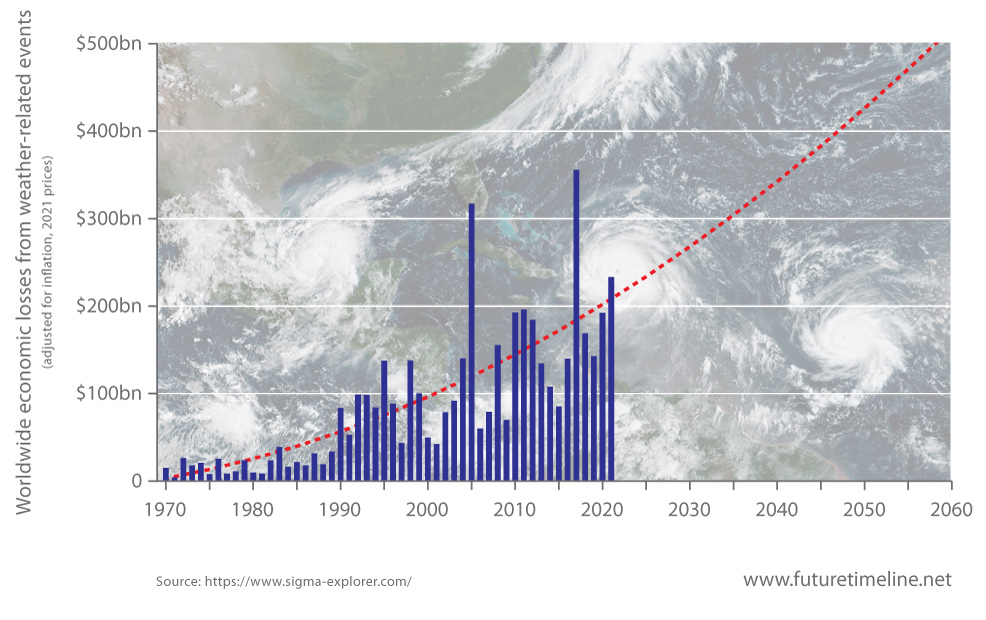
Economic losses from weather-related events, 1970-2060 This graph shows the worldwide economic losses from weather-related events, from 1970 through to the present day, with a future trend projected out to 2060. The data here is from Swiss Re, the world's largest reinsurer, and is adjusted for inflation at 2021 prices. It excludes non-weather disasters, such as earthquakes, tsunamis, and volcanic eruptions. A significant gap exists between the total economic damages and the losses protected by insurance. For example, the worldwide figure for weather-related disasters in 2021 amounted to $233.27 billion, of which insurance covered "only" $101.12 billion. As the global average temperature continues to rise, so too does the frequency and severity of weather-related events; from tropical cyclones, to droughts, floods, and other disasters. Following a somewhat stable period in the 1970s and 1980s, an inflection point emerged from around 1990, producing a rapid acceleration of economic damage. Over the last 40 years, the average losses for a given year have increased ten-fold. In terms of the worst damage, two years stand out – 2005 and 2017. The former included Hurricane Katrina and three other devastating storms touching land; the latter became the costliest tropical cyclone season on record, mostly due to hurricanes Harvey, Irma, and Maria. More recently, heat waves have trended upwards in frequency and length. Meanwhile, several European countries experienced catastrophic flooding in 2021. As our graph shows, the magnitude of disasters witnessed in 2005 and 2017 could become an annual occurrence from around 2040 onwards. Under the current emissions scenario, in which global temperatures are likely to keep rising until at least the 2060s, these damages would only continue to mount. During "outlier" years that greatly exceed the average, economic losses could be immense, perhaps reaching $1 trillion (in 2021 prices), or equivalent to the entire GDP of nations like Saudi Arabia, the Netherlands and Switzerland. By 2060, sea levels will also be playing a far greater role than today, adding to the existing damages. Without massive government intervention, the insurance industry may struggle to survive amidst this continual onslaught of disasters. Our economic future will depend on how we approach the problem of infinite growth on a finite planet.
Sources: Sigma Explorer, Swiss Re Institute:
Posted: 29th July 2022. Last updated: 29th July 2022.
If you enjoy our content, please consider sharing it:
|







